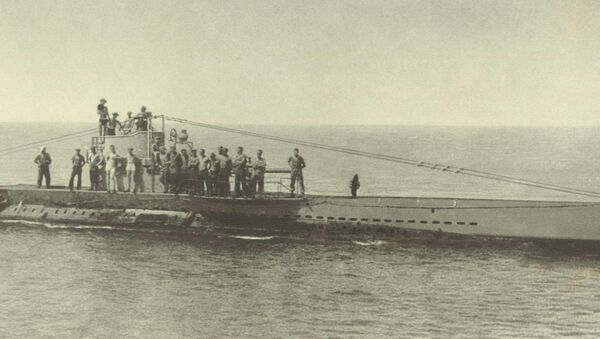On board the wreck there are 18 fully-intact mines and six torpedoes, Gert Normann Andersen, director of Sea War Museum Jutland and diving company JD-Contractor, which carried out the expedition, told the Danish tabloid newspaper BT. According to him, this is a rare find.
The find was identified as the German submarine of UC30 class, which was regarded as a mystery among historians and divers. The submarine disappeared with the whole crew of 23 men in 1917, but was estimated to have sunk in a completely different place. The dangerous find rests eight to ten kilometers west of Esbjerg facing Horns Rev, 17 meters below sea level.
"We keep an eye on the area. Luckily, it is so close to the shore that we have good radar coverage of it and we can make sure that no boats appear in this area for fishing," Klaus Randrup, surveillance leader at the Defense Operation Center, told Danish Radio.
"There are thousands of old mines left in Danish waters from both world wars, so it is nothing new to us to encounter this kind of thing on the seabed, but what's of course quite remarkable is that you find a submarine so close to shore," Randrup said.
According to Gert Normann Andersen, the once deadly submarine has been rendered harmless by the years gone by.
"But the explosives are simply not as dangerous today as they were 99 years ago. Each mine has a detonator that is particularly susceptible to pressure and blows, so if someone starts working on it, there is a risk that it explodes," Norrman Andersen said.
"As long as the old stuff remains at the bottom, it is not dangerous. It might become a threat, though, if anyone, on the contrary, drags it ashore, the explosives begin to dry. Then the situation may become unstable and dangerous," Randrup said.
The expedition to the North Sea was carried out as part of the preparation for a TV program in collaboration with Danish Radio, which is scheduled to be broadcasted later this month.
Sensationel opdagelse: Nordsø-ekspedition finder tysk ubådsvrag med 18 miner https://t.co/Ij7horknek pic.twitter.com/KuqKyctNvz
— Berlingske (@berlingske) August 18, 2016





